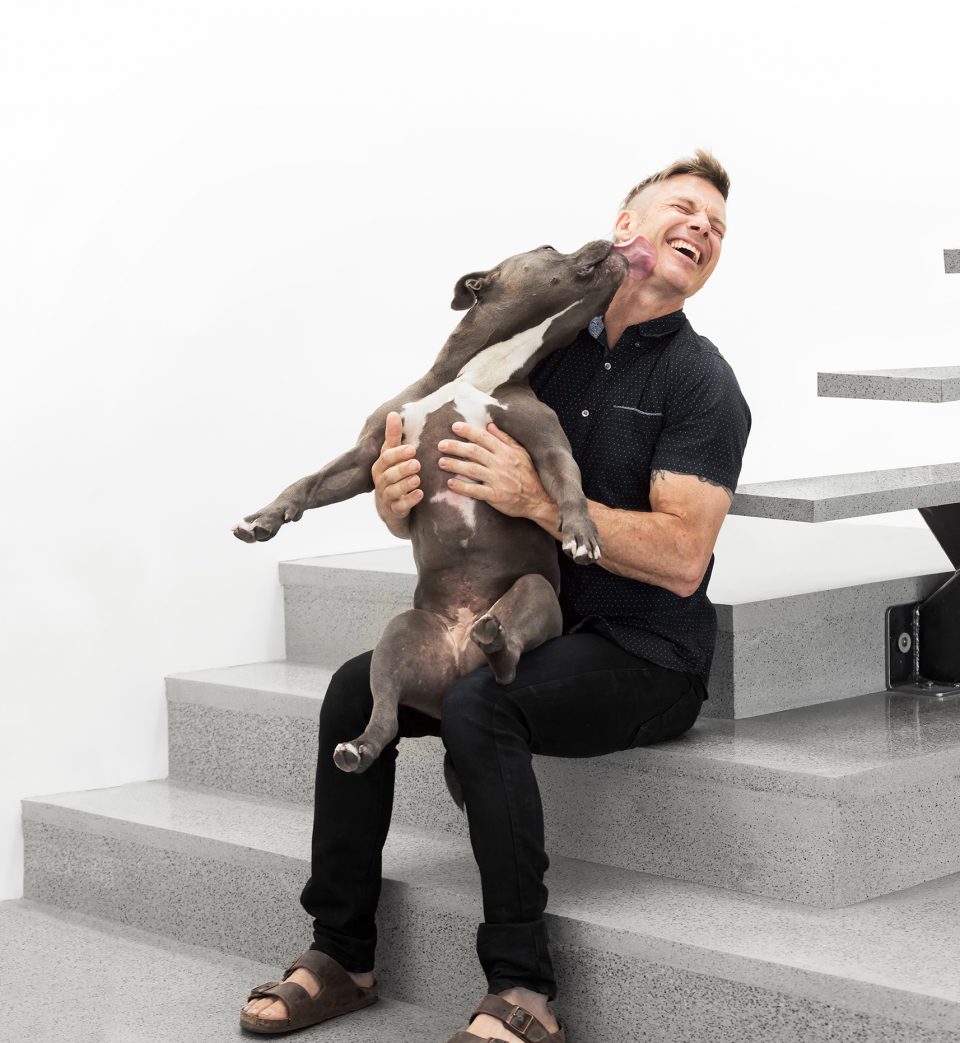Interview by Michelle Heslop. Photo by Jody Beck.
You’ve been working with concrete for about 25 years. How has the industry changed? When I first started, the industry was mostly unsupported. I had a few mentors and did a lot of experimenting, but everything was about pushing boundaries. Now there is advanced training, high end tooling, and sophisticated products that utilize all the latest technology. Products like UHPC and GFRC have redefined the possibilities of concrete. The options and applications are entering territory never previously imagined.
What has been your role in that change? I take risks and experiment. Early on in my career, I really pushed the limits of the products that were available and often invented machinery to solve various design challenges. I made a name for myself as the guy to call when everyone else said no or didn’t have a solution for a particular project. Taking risks and putting yourself out there means that there will be mistakes. But this is where I learn the most. These days the risk is much more calculated and I find myself fixing others’ mistakes more than my own.
As the founder of Szolyd Development and a partner in Stone Design, you have a lot of responsibility. What do your days look like? My main role is keeping interesting projects on the books to keep the team busy. We need a balance of “bread and butter” projects that pay the bills and more complex ones that challenge us and keep us excited about what we make. I do all the research and development and create samples which lets me work out of my home concrete lab. I take care of the complex concrete pours and then hand off to the team when things are under control.
Most people think of concrete as a material with limited applications like the foundation of a house or for sidewalks. Let’s talk about concrete’s potential. I like to tell people to think of concrete as a more diverse version of granite or other solid surface materials. We can start with a grey or white base and then add colours, aggregates and various other things to create an infinite variety of aesthetics. It can be sprayed, cast into molds and troweled into place. We can cast and finish on site, or pour in our shop and install finished pieces.
Everywhere I look, I see potential concrete applications. The best uses bring value to projects in the form of aesthetics, durability, and function. As more and more concrete is integrated into residential home builds, people want a more refined product. The “industrial look” has a place, but tends to be an excuse for poorly done work in a lot of cases. Stone Design is focused on the fine details, such as threshold joinery, heated thin section floors, terrazzo and integrating recycled materials into the mix.
Tell us about one of your most recent projects. One of the most challenging and creative projects was a medical aesthetics clinic in Yaletown, Vancouver. The owner came to me with a picture of pink concrete with broken pieces of large white marble inlaid into it. This aesthetic goes back to 16th century ancient Rome and is called Palladiana terrazzo. I knew it could be done, but site conditions proved challenging. We were dealing with a 100-year-old building that had wood floors that were two inches out of level over 10 ft. We also had to join our floor up to the hardwood in a seamless manner while also maintaining the aesthetic and structural integrity.
We used anti-fracture membranes and fibreglass reinforcement to prep the floor before laying the mosaic of white marble. Then the colour matched pink concrete was back poured and the floor was ground and polished up. A matching 12 foot reception desk was made in the shop that had the marble pattern “butterflied” to make it look like the two slabs came from a quarry. On top of everything else, we could only work during the evenings and had countless obstacles thrown at us.
Other than working in your concrete lab, where is your happy place? I have too many sports and hobbies and have to put a cap on new endeavours to focus on my true loves. I am most happy when the phone is turned off and I am high up on the rock, climbing in places like Squamish or mountain biking the trails of BC. The best days involve adrenaline in the mountains with friends and are capped off with a local hoppy beverage or two around a fire. Lately I have been playing the guitar again and trying to do yoga.














